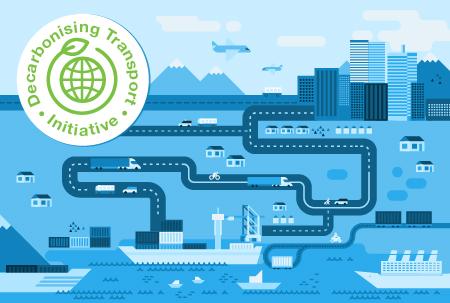Is Low-Carbon Road Freight Possible?

The issue
Fully 80% of the global net increase in diesel use since 2000 came from road freight
Road freight is the fastest-growing CO2 emitter
Moving goods by road consumes about 50% of all diesel produced. Fully 80% of the global net increase in diesel use since 2000 come from road freight. And road freight activity is set to more than double from 2015 to 2050. This will offset any expected efficiency gains and lead to an increase in emissions by 2050, not a reduction. Trucks are in fact the fastest growing source of global oil demand. They account for 40% of the expected increase in oil demand to 2050 and 15% of the increase in global CO2 emissions. Trucks will even surpass passenger cars as the major oil consumers.
Decarbonising road freight is low on policy agendas
Transport is one of the main sectors responsible for climate change. It accounts for 23% of energy-related CO2 emissions. And unlike other sectors, it has not yet succeeded to reduce its carbon intensity. In the European Union, total CO2 emissions fell 20% from 1990 to 2016, transport emission increased by 27%. Within the transport sector, less policy pressure has been exerted on road freight than on passenger cars. Fuel economy standards apply to more than 80% of light-duty vehicles. Yet only four countries (Canada, China, Japan and the US) currently have fuel economy standards for trucks, covering 51% of the global road freight market.
Key insights
Road freight will more than double to 2050. The increased demand will offset any CO2 reductions from efficiency gains
Decarbonising road freight needs carbon-free fuels
Heavy trucks on long-haul trips generate most of road freight’s CO2 emissions. But cost-effective alternatives are lacking. Road offers a level of flexibility, accessibility and overall service level at competitive costs that limit the possibilities of modal shift. More efficient logistics and vehicles are part of the roadmap toward decarbonisation, but alone are not enough to reach climate target reductions. Thus, to reach climate targets, zero-emissions truck fuels would need to be in general use by 2050.
There is no single alternative truck fuel
A silver bullet to replace diesel in trucks is not in sight. Given the current state of research and commercial deployment, none of the known zero-emissions truck fuels will see widespread use in the short to medium term. “Electric roads” could efficiently power long-haul trucks, but they will only cover some trips. Hydrogen, electric batteries and advanced biofuels also have inherent limitations. They can complement each other, however. Policies should ensure that synergies are exploited to maximise any CO2 reductions possible even in the short to medium term. More research and pilot projects will give flexibility to scale up technologies that deliver on public policy objectives. Priorities will be needed, e.g. for investments in supply infrastructure. Future breakthroughs in advanced biofuels, synthetic renewable fuels or carbon storage and sequestration may happen. Sound policy will not bank on this, however.
To Dos
Logistics data offers huge potential to calibrate decarbonisation policies based on evidence
Scale up tested decarbonisation measures for trucks
Improving the fuel efficiency of heavy goods vehicles is a core component of decarbonising road freight. Aerodynamic retrofits, reduced-rolling resistance of tyres, vehicle weight reduction, increased engine efficiency and hybridisation all work. Widespread deployment will be helped by ambitious standards for fuel economy and CO2 emissions. These must include heavy freight trucks. For urban freight, alternative fuels provide a solution. Policy should consider pricing mechanisms, stricter emissions standards, zero-emissions zones and recharging infrastructure. Incentives for the adoption of alternative fuels by large fleets can deliver scale.
Use more data to take evidence-based decisions
Data are at the heart of logistics. This offers huge potential to calibrate decarbonisation policies based on evidence. Vital indicators for policy decisions, e.g. for vehicle capacity utilisation, exist, but are usually owned by private businesses. Access to such information for public policy purposes is critical. Ways to use it without infringing on privacy and commercial interests can be found. Data analysis should also be improved. New modelling tools and more disaggregated approaches would provide more relevant insights for policy makers and industry.
Further reading:
Towards Road Freight Decarbonisation (ITF 2018)
Subscribe to ITF Policy Briefs
This report is part of the Decarbonising Transport initiative